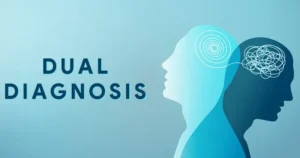
It’s a common misconception that substance use disorder is a standalone issue—a problem of willpower or a simple habit to break. But the reality is far more complex. For many, the journey into substance use is deeply intertwined with their mental health. It’s a relationship of cause and effect, where one can trigger or worsen the other, creating a vicious cycle that can be incredibly difficult to escape.
If you’re on the path to sobriety or supporting someone in recovery, understanding this connection isn’t just helpful—it’s crucial.
The Chicken-or-the-Egg Dilemma
So, which comes first? The mental health condition or the substance use? The answer is often “both.”
- Substance Use as Self-Medication: Many individuals with undiagnosed or untreated mental health conditions turn to drugs or alcohol to cope with their symptoms. A person with anxiety might drink to quiet their racing thoughts. Someone with depression might use stimulants to feel a temporary lift in mood. The substance becomes a crutch, offering a fleeting sense of relief from emotional pain. However, this relief is temporary and often leads to a worsening of the underlying mental health condition in the long run.
- Substance Use Triggering Mental Health Issues: Conversely, chronic substance use can directly cause or exacerbate mental health disorders. Alcohol and certain drugs can alter brain chemistry, leading to depression, anxiety, and even psychosis. The stress of managing a substance use disorder—the financial strain, legal troubles, and damaged relationships—can also contribute to significant mental distress.
The Dangerous Cycle
This dynamic creates a harmful loop:
- A person experiences a mental health symptom (e.g., severe sadness, panic attacks, social anxiety).
- They use a substance to temporarily numb or escape the feeling.
- The substance use provides a brief, false sense of relief.
- The substance use eventually worsens the mental health condition (e.g., alcohol-induced depression, increased anxiety after a drug crash).
- The person now has more severe mental health symptoms, leading them to use more of the substance, and the cycle continues.
The Recovery Road: Addressing Both at Once
This is why a successful recovery plan must be “dual-diagnosis” in nature—meaning it addresses both the substance use disorder and the co-occurring mental health condition simultaneously. Simply stopping the substance use is often not enough. If the underlying mental health issues are not addressed, the individual is at a very high risk of relapse. The same emotional pain that led them to self-medicate in the first place will still be there, waiting for them.
What This Means for You on Your Journey:
- Be Honest with Yourself and Your Support System: Don’t be afraid to talk about your mental health struggles. The shame that often accompanies both substance use and mental illness can be a huge barrier to getting help.
- Seek Integrated Treatment: Look for treatment centers or therapists who specialize in dual-diagnosis. They will have a deep understanding of the connection between your mental health and substance use.
- Embrace Therapy and Other Coping Mechanisms: Therapy is a powerful tool for developing healthy coping strategies. Learning to manage anxiety, depression, or trauma without relying on substances is a foundational skill for lasting recovery.
- Patience is Key: The journey to sobriety and mental wellness is not a race. There will be good days and bad days. The goal is progress, not perfection.
The path to recovery is not just about abstaining from a substance; it’s about healing the whole person—mind, body, and spirit. By recognizing and addressing the powerful link between mental health and substance use, you can build a solid foundation for a future filled with hope, health, and true freedom.
#MentalHealth #SubstanceUse #Recovery #DualDiagnosis #AddictionRecovery #MentalWellness #Sobriety #SelfCare

Leave a Reply